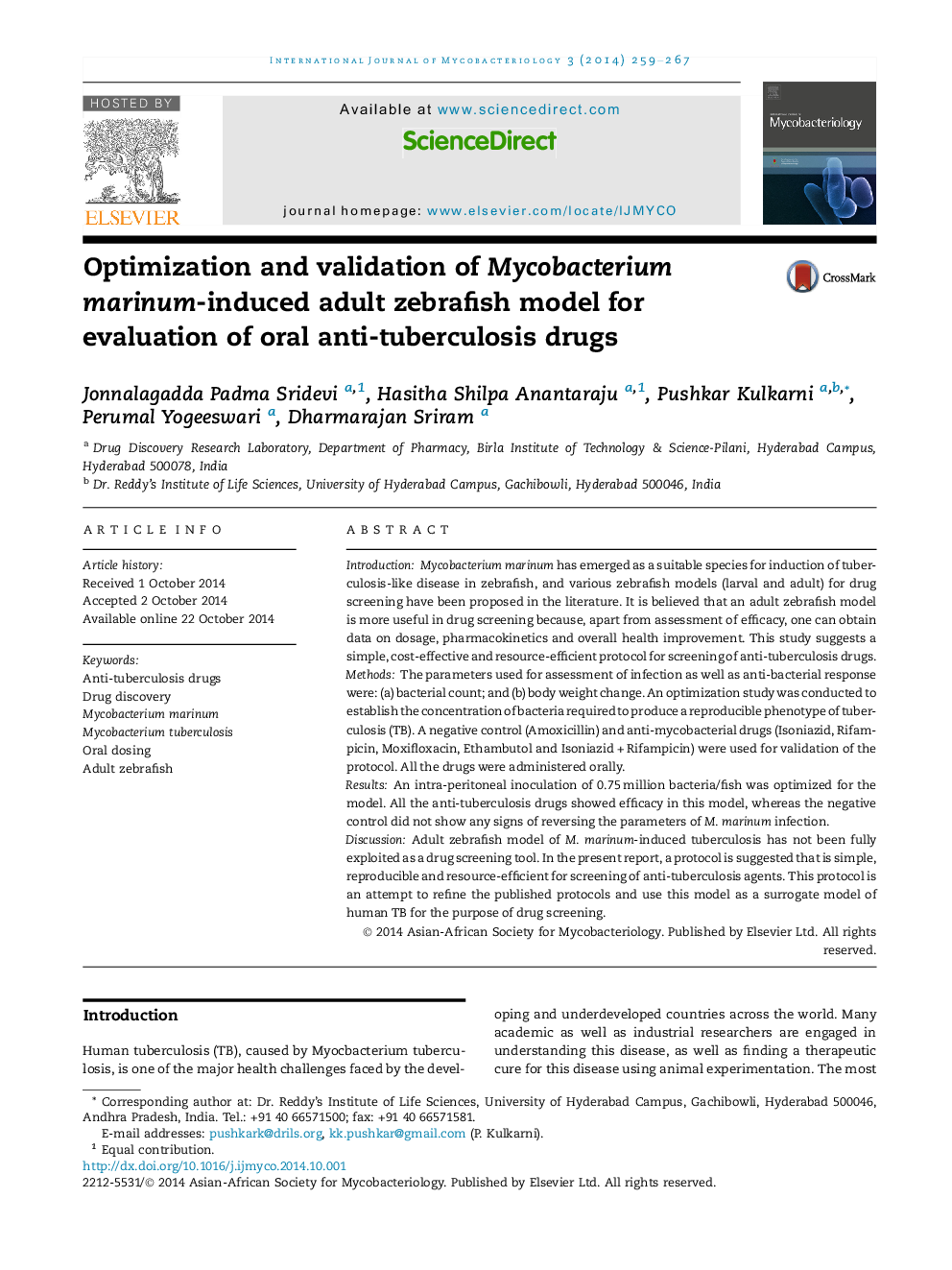| Article ID | Journal | Published Year | Pages | File Type |
|---|---|---|---|---|
| 3405189 | International Journal of Mycobacteriology | 2014 | 9 Pages |
IntroductionMycobacterium marinum has emerged as a suitable species for induction of tuberculosis-like disease in zebrafish, and various zebrafish models (larval and adult) for drug screening have been proposed in the literature. It is believed that an adult zebrafish model is more useful in drug screening because, apart from assessment of efficacy, one can obtain data on dosage, pharmacokinetics and overall health improvement. This study suggests a simple, cost-effective and resource-efficient protocol for screening of anti-tuberculosis drugs.MethodsThe parameters used for assessment of infection as well as anti-bacterial response were: (a) bacterial count; and (b) body weight change. An optimization study was conducted to establish the concentration of bacteria required to produce a reproducible phenotype of tuberculosis (TB). A negative control (Amoxicillin) and anti-mycobacterial drugs (Isoniazid, Rifampicin, Moxifloxacin, Ethambutol and Isoniazid + Rifampicin) were used for validation of the protocol. All the drugs were administered orally.ResultsAn intra-peritoneal inoculation of 0.75 million bacteria/fish was optimized for the model. All the anti-tuberculosis drugs showed efficacy in this model, whereas the negative control did not show any signs of reversing the parameters of M. marinum infection.DiscussionAdult zebrafish model of M. marinum-induced tuberculosis has not been fully exploited as a drug screening tool. In the present report, a protocol is suggested that is simple, reproducible and resource-efficient for screening of anti-tuberculosis agents. This protocol is an attempt to refine the published protocols and use this model as a surrogate model of human TB for the purpose of drug screening.
